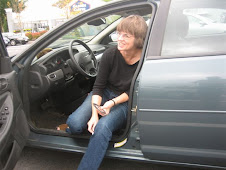Three reasons to read this one: (1) this is supposed to be my year theme of biographies of scientists; (2) after reading the Snoring Bird, I decided out of the other lives I read, his was the most interesting and the best written; and most importantly, (3) my family's sense of roots.
While I itch to send off for a DNA kit, my identity is very strongly rooted in being a half Irish, half French resident of upstate New York. Both my parents had the same Irish/French mix with only the gender of my grandparents being switched. Both families have long solid roots in the State capital and no one ever seemed to want to venture far from home. Reading Heinrich's book The Homing Instinct might explain sort of why.
I moved to my first "home" when my parents built a house in the suburbs when I was nine months old; I lived there until I was 28, moving to an apartment probably two miles away. The 50s and 60s were a time when oodles of neighborhood kids roamed freely to venture to the undeveloped end of the street to gather tumbleweeds, bring home tadpoles and pick endangered lady slippers. The street became a "cult" to those who moved away kept asking what was new on the "street."
As Heinrich shows, I too decided to build my own home on an empty lot in the next suburb over once we had more children than bedrooms in our apartment. Our youngest has a strong, strong sense of his town and city, and after a semester or two going to college down the river, "homed." (The other son, probably more influenced and venturesome (like my husband's family) moved to Texas before he turned 18.
Like The Snoring Bird, the reader has to stick with Heinrich to get to the best parts of his stories. My first aha moment didn't come until page 274 this time when he moves on to fire:
"Keeping fire, and presumably much later also creating it, would have been a precious skill. No other animal has ever master it But before we invented the tool to make and then catch a spark and turn it into fire, we had to "understand" fire. We had to know its behavior, its quirks and characteristics. Otherwise we would have had no idea what to do with the spark, to make it grow into a tiny flickering flame, and to tenderly nurture it, keep it alive and make it grow These skills are not rote. They are built on understanding or "empathy" for the fire, as though it were alive. Our understanding of fire required something akin to what psychologists and behavioral biologists call "theory of mind," the capacity mentally to place ourselves into th life of another being or thing, which allows us to predict how it might react."
Hence home and hearth. When we built the house, I insisted on a fireplace. It stood unused for over thirty years. The first thing I did once retired, was to put in a gas insert so I can sit by the "fire" all winter long. And I sit by the fire pit in the yard in the summer, being the fire-keeper, gathering wood, starting it and emptying the ash.
As much as I've traveled, and despite the attraction of moving to where our older son lives, I would rather invest my funds into making my home more homey.
And Heinrich is at his best when he is homey, self-disclosing, talking about his parents, their roots in Europe, his new American home and his allegiance to Maine. When he describes his studies of insets and birds, even when out of the country, he always brings the stories back to his fields and friends. On to his book, on life everlasting.
Monday, August 13, 2018
Subscribe to:
Post Comments (Atom)



No comments:
Post a Comment